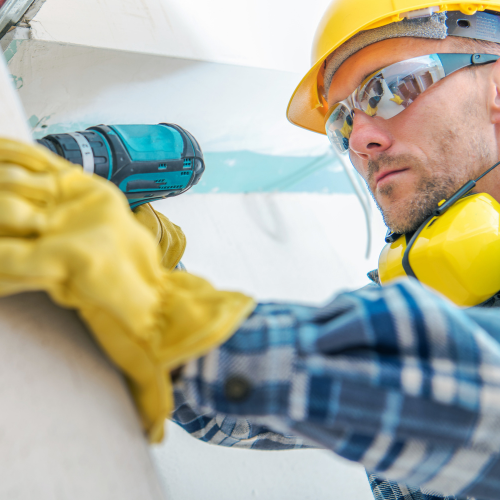
Preventing Repetitive Motion Injuries
While repetitive motion injuries (RMIs) are common among athletes, these injuries can occur in the workplace. Also known as repetitive stress injuries or cumulative trauma disorders, RMIs impact a broad range of occupations, including jobs that require heavy lifting and stationary office roles. RMIs occur when continuous physical stress from daily tasks damages nerves, tendons or muscles quicker than the body can heal from such stress. Employees may be at greater risk of experiencing RMIs on the job if they:
- Maintain static or awkward postures for long periods of time.
- Lift or carry heavy objects.
- Use equipment that vibrates (e.g., power tools).
- Work in cold temperatures.
- Conduct repetitive movements using muscles, joints or ligaments.
- Work in high-stress environments.
RMIs can cause several conditions, including tendonitis, carpal tunnel syndrome, bursitis and rotator cuff injuries. If left untreated, these injuries can worsen and make it difficult to continue working. There are various safety tips that employees can follow to minimize RMIs. Consider these best practices:
- Prioritize ergonomics. According to OSHA, one of the best methods to prevent RMIs in the workplace is to implement ergonomics—fitting a job to a person. With this in mind, be sure to adjust your workstation to allow you to maintain a comfortable position and use a chair that provides proper back support, if applicable.
- Rest your body. Take regular breaks from repetitive tasks by going on short walks around the workplace or stretching. Consult your supervisor and allow your body ample time to recover if any pain arises from repetitive tasks.
- Use safe techniques. Practice proper techniques when lifting, using equipment or typing. In addition, make it a priority to uphold good posture throughout the workday.
For more information on RMI prevention measures, talk to your supervisor.
The Importance of Personal Protective Equipment
Personal protective equipment (PPE) is critical to protect employees like you from various workplace hazards. According to the Bureau of Labor Statistics, an average of 2.8 million nonfatal workplace injuries and illnesses occur each year. Nevertheless, safety experts assert that using the proper PPE can prevent many workplace injuries. As such, it’s important to be aware of the types of PPE you may need to use on the job. Depending on the task at hand, different kinds of PPE are available to keep you safe. Here’s a breakdown of common PPE:
- Head protection (e.g., hard hats) is critical when there is a risk of falling objects or force on the head. This PPE may also protect from electrical shock or burns.
- Eye and face protection (e.g., safety glasses and goggles) can minimize exposure to hazards such as chemicals, flying particles or light radiation.
- Hearing protection (e.g., earplugs) must be used as a safeguard in the presence of excessive noise levels to prevent hearing damage.
- Respiratory protection (e.g., respirators and breathing apparatuses) should be used to defend against airborne diseases and certain workplace contaminants, such as toxic fumes or dust.
- Body protection (e.g., utility overalls) is appropriate for tasks that could cause bodily injury of any kind.
- Hand and arm protection (e.g., safety gloves) can shield against amputation hazards or toxic chemical exposure on the job. Also, the type of safety glove needed depends on the task and its associated hazards.
- Foot protection (e.g., safety boots) can help reduce foot and toe injuries from heavy objects, chemicals or electrical hazards.
Always wear the required PPE to safeguard yourself from hazards in the workplace. Furthermore, don’t ditch your PPE because of discomfort—contact your supervisor in the case of ill-fitting equipment.

Operation Safe Driver Week
Operation Safe Driver Week is an annual seven-day initiative created by the CVSA to help

7/17 Panel Recap & Financial Insights
Stepping into summer 2024, the insurance landscape continues to present challenges and opportunities for businesses

Employee Spotlight: Adam Knapp
Seubert welcomes Adam Knapp to the agency’s Commercial Lines Division as a Technical Account Manager.
